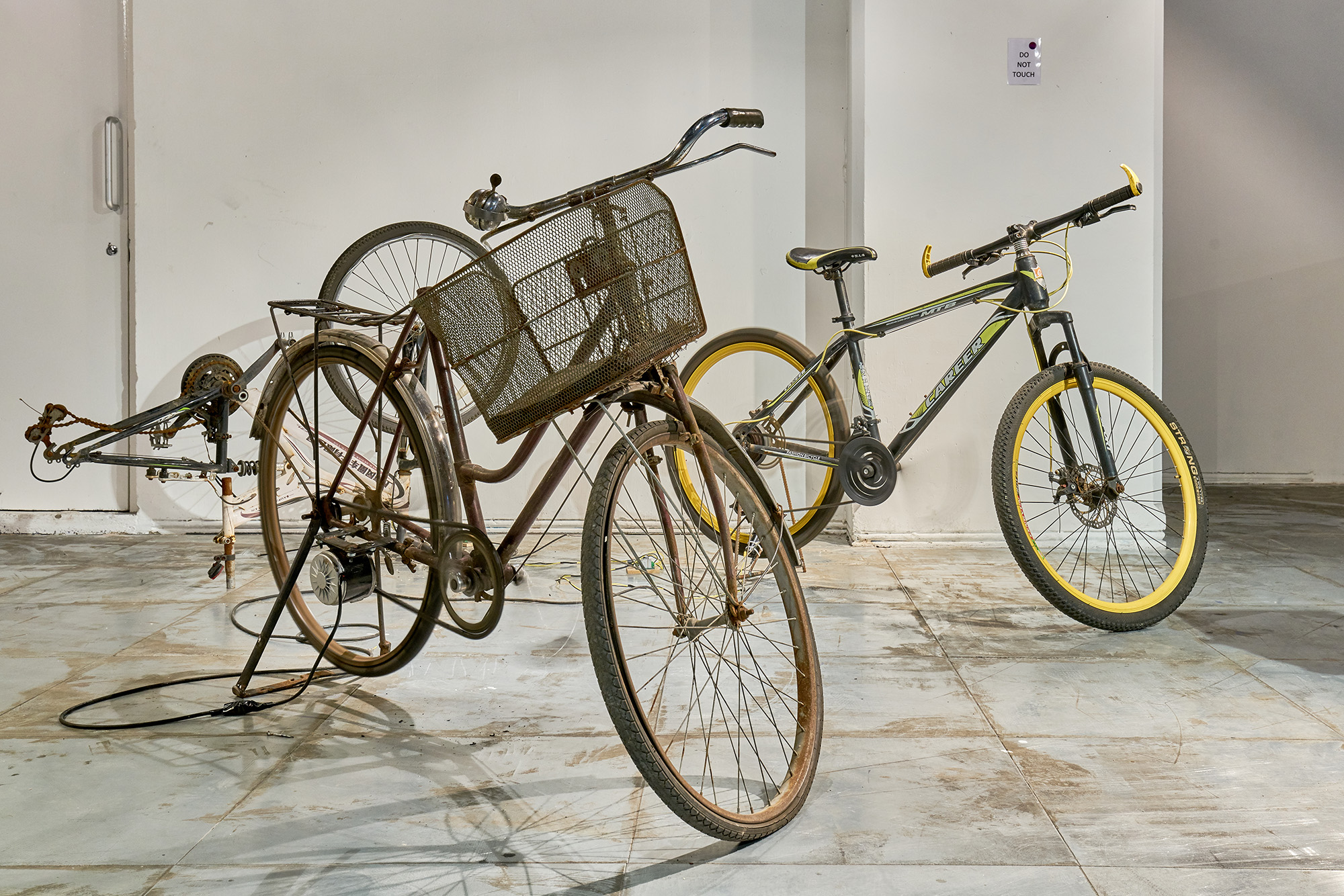Shows
“This is Shanghai”


Liverpool and Shanghai have been sister cities since 1999, and if one of the objects of twinning towns is to foster cultural understanding, it would be hard to find a better asset than an exhibition like “This is Shanghai,” held at Liverpool’s Cunard Building with additional works staged across the city’s waterfront. The synecdoche for China’s most populous city began as visitors descended into the dark of the building’s basement gallery, and the aleatoric clanking of Zhang Peili’s The Only Access (2018). Lending an antechamber of iron bars to what would otherwise be an open gallery space, the cage-like work comprises two gates that open and close at random, leading into one side of the gallery or the other. It seemed at first that these entries must grant access at the tripping of some sensor, but after a moment the Kafkaesque reality became clear. The immersive installation evokes a genuine sense of constraint, even anxiety, in a way that works of this kind often claim but rarely manage to do, reflecting the impositions of the Chinese state.


If this arbitrary authority had the visitor enter through the left gate, their first encounter was with two works by Yang Zhenzhong, both of which engage with the rapid urbanization of Shanghai. In Disinfect (2015), six residents of the city are projected in a line, each of them gesturing furiously such that, in the dark, they seem to emerge from the wall as they silently vent their frustrations at urban life. In Let’s Puff (2002), two projections face each other on either side of an alcove. In one, a young woman blows in the direction of the other, causing point-of-view footage of a stroll down Nanjing East road to fast forward with each puff, creating both a comical illusion of cause and effect, and suggestion an airy instability to life in the modern city.
In this same part of the gallery was a sound installation by Yu Ji. Sharing the Losing (2018) consists of a collection of partly dismantled bicycles lying at different angles, their pedals and wheels turning automatically to sing a low, whirring dirge. The work comments on the culture of sharing bicycles in China, and prompts a sense of loss. At one time, bicycles in the country were precious, lovingly maintained possessions produced in classic styles and by only a handful of manufacturers. Since the introduction of communal bicycles, however, thousands of these vehicles have been abandoned in public spaces, stripped of the joy and romance that these devices—which connect so closely to the body, like an extension of the self—are capable of inspiring. This isn’t to say, however, that Yu ignores the benefits and pleasure shared bicycles can bring. A second part of the project—which was unfortunately cancelled that day due to health and safety concerns—would have seen visitors taking the old bikes from the gallery to ride around the Liverpool waterfront while listening to a kind of second-person audio tour of Shanghai, connecting the two spaces, and the experiences thereof, across various sensual lines.

Moving to the other half of the exhibition space, visitors passed through the glowing red light emitted by Shi Yong’s neon installation of 300 Chinese characters. The scrambled words of Three Hundred Characters (2018) previously made up a text by Shi that recounts an incident in Shanghai, the public discussion of which was silenced. Now devoid of clear meaning, the red neon suggests the distractions of entertainment and sex, and yet the constant glow speaks to a residual if non-verbal knowledge of past events that isn’t so easily expunged from the popular psyche.
Passing from the dark depths of the gallery—saturated by an emotional and textural reproduction of a faraway city—and through the red glow of corrupted storytelling, visitors arrived finally at a third space, where the twin cities came together. Showcasing a masterly curatorial attention to light, here windows to the outside permitted the cool sun of a northern English summer to bathe a series of photographic works by Liang Yue that highlight connections between the two towns: a local Chinese restaurant that could just as well be in Shanghai, studies of light and life that might occur with equal probability in the two cities, and a single-channel video showing the surface of the river Mersey, which might as easily be the Huangpu.
On the journey that “This is Shanghai” represented, there were many other works, almost all of them displaying startling quality, clarity and humanity, and proving that the claims so often made by contemporary exhibitions—to meaning, immersiveness and socio-political relevance—are all indeed achievable, if executed with genuine thought and care.
Ned Carter Miles is the London desk editor of ArtAsiaPacific.
“This is Shanghai” is on view at the Cunard Building and surrounding area, Liverpool, until September 7, 2018.







